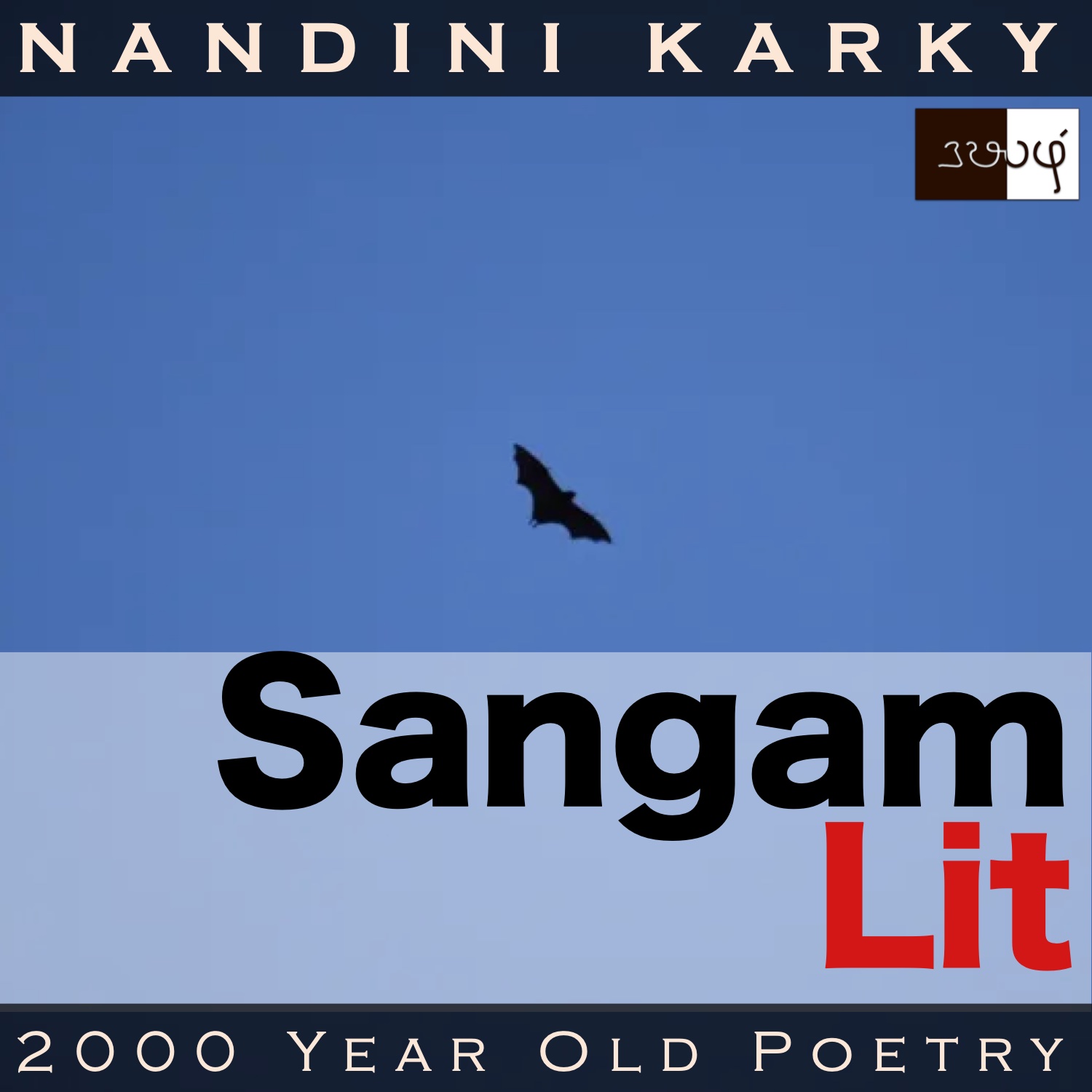Podcast: Play in new window | Download
Subscribe: Apple Podcasts | Spotify | Amazon Music | Android | iHeartRadio | Email | TuneIn | RSS | More

In this episode, we relish a striking plant-animal simile, as portrayed in Sangam Literary work, Kurunthogai 352, penned by Kadiyaloor Uruthirankannanaar. The verse is situated in the drylands of ‘Paalai’ and speaks in the voice of the lady to the confidante, expressing her distress as the man remains parted away.
நெடு நீர் ஆம்பல் அடைப் புறத்தன்ன
கொடு மென் சிறைய கூர்உகிர்ப் பறவை
அகல்இலைப் பலவின் சாரல் முன்னி,
பகல் உறை முது மரம் புலம்பப் போகும்
சிறு புன் மாலை உண்மை
அறிவேன்-தோழி-! அவர்க் காணா ஊங்கே.
‘I know of this suffering only when he’s away’, says a voice in this verse. The opening words ‘நெடு நீர் ஆம்பல்’ talk about ‘a water lily in a deep pond’ and sketch a contrasting image to this setting of a drylands region. Learnt a new word for ‘leaf’ in ‘அடை’. Next, from the plant, we turn to the animal kingdom in ‘கூர்உகிர்ப் பறவை’ meaning ‘bird with sharp claws’. I just mentioned about learning a new word for ‘leaf’ but curiously the contemporary word for ‘leaf’ – ‘இலை’ too appears here, in ‘அகல்இலைப் பலவு’ meaning ‘wide-leafed jackfruit’. Why use two different words to denote the same object? Does one refer to water plants and the other to land ones? Questions for etymologists to ponder over! The time of the day appears in ‘சிறு புன் மாலை’ meaning ‘the little evening of suffering’ also hinting on the theme of separation. Ending with the words ‘அவர்க் காணா ஊங்கே’ meaning ‘when I don’t get to see him’, the verse welcomes us to listen with empathy.
What do these glimpses of jackfruits, waterlilies and birds have to do with the lady’s suffering? The context reveals that the man and lady were leading a happy, married life when the man parted away to gather wealth. Languishing in his absence, the lady, one day, says to her confidante, “Akin to the back side of a deep pond water-lily’s leaf, are the curved, soft wings of the bat with sharp claws. Dreaming about the wide-leaved jackfruit on the mountain slopes, the bat flies thither, leaving the ancient tree, on which it was resting during the day, all alone. I realise the truth of this suffering-filled evening, my friend, when I don’t see him near me.” With these words, the lady gives word to her feelings of angst during the man’s separation.
Time to explore the nuances. The lady starts by zooming on to a waterlily plant growing in a deep pond, and here, she specifically, points to the waterlily’s leaf, and that too, to its underside. As we take in its veined appearance, the lady brings what seems like a bird before our eyes. She says that bird with sharp claws has a curved and soft wing, exactly like the underside of that waterlily’s leaf. As we are wondering which bird this could be, the lady gives us further clues about its activities. She says the bird desires to feed on the jackfruit in the mountain slopes and so leaves the old tree that it was resting on, during the day, and flies away there. These clues hinting of a specific nocturnal behaviour reveals that this creature is no bird but a flying mammal, the bat! The lady explains that she has talked about the bat’s flight only to say that she understands there is an evening and one, filled with suffering, only at such times when her man was not by her side.
At the core, the lady is simply saying, ‘I miss the man terribly during this evening hour’. However, the way she says it is fascinating, for it brings before our eyes, the flight of a bat, its sleep and dreams, along with the etched surface of a water-lily’s leaf. With all the techno-tools at hand, we can now compare a hundred plants and animals but will we manage to find even a few such stunning similarities between them is a moot point. So, I wonder what training these poets had to be able to do this, verse after verse. Did these poets spend years in nature, looking at every leaf, flower and stem and then some birds and animals? However they have managed to do this, kudos to their deep attention to such nuanced details that makes us pause today in our machine lives and take a moment to delight in the spectacular magic and beauty of nature!




Share your thoughts...